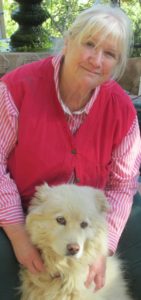
American novelist, Elizabeth Berg, wrote, “You are born into your family and your family is born into you.”
The DNA you carry comes from your mother and father, and there is no changing that. Science believes your DNA is the result of the very first molecule capable of coding for self-replication that, over a period of 3.5 billion years, changed in response to its environment to eventually become…. you. And you, in this day and age, have the ability to spit into a cup and have your amazing DNA studied in ways that can reveal your most proximate ancestors as well as provide health information that can warn you of a propensity for and help you prevent medical conditions. It can provide information that allows doctors to give you personalized therapies for a wide variety of medical conditions.
I have been struck by the idea of genetic codes more and more lately as computer coding becomes more and more evolved. We program computers with ones and zeroes. Life is programmed with four simple molecules: adenine, guanine, thymine and cytosine. Four little molecules called nucleotides that spell…..LIFE! Life in its myriad forms. Life in all its eccentricities and mutations. Code that spells DaVinci. Code that spells the Boston Strangler. Can you imagine a celestial room full of angel-geeks, busy coding out your existence?
And what happens when the code is corrupted? Have you ever had a document corrupted online? It gets really screwed up. Just press one wrong key and all your hard work becomes gobbledygook. When a human being gets one little coding error—something out of place—or upside down—or missing…. you can get a tragedy. Sickle cell disease is the result of a coding error. Schizophrenia is a result of a coding error. So many errors. Then again, you could get a good mutation that causes rare immunities or quicker reflexes or higher intelligence or any number of differences that can make a human exceptional. It’s genetics. It’s code.
A LITTLE HISTORY
Scientists have been working on the genetic code for a long time. The Guardian reported that in 1859 Darwin suggested evolution by natural selection of inherited changes (mutations, i.e. code changes). In 1865 Mendel’s genetic studies with pea plants added more theories of heredity. In 1943 Schrodinger identified genes as information carriers. 1944 found a United States team deciding DNA is the unit of heredity. Watson and Crick deciphered the DNA code in 1953. In 1987 the U.S. Dept. of Energy began the Human Genome Project, which was completed in 2003. The entire human body was mapped and decoded. What an accomplishment! And what a ride it has been since then.
WHAT HAVE SCIENTISTS DONE WITH THAT REMARKABLE CODE?
Code breaking has a long history of changing history. Once the Human Genome Project was complete, scientists went to town. It was the dawn of genetic engineering. According to yourgenome.org, “Genetic engineering refers to the direct manipulation of DNA to alter an organism’s characteristics (phenotype) in a particular way.” This can produce amazing results.
For example, insulin is produced by the pancreas. Some people can’t produce enough insulin, so they have to inject themselves with it. Insulin was collected from animals. Now, with genetic engineering, a small piece of DNA is cut out of a bacteria or yeast cell, the gene for human insulin is inserted and the engineered piece is put back into the bacteria or yeast cell. It divides and starts making insulin. The more it divides, the number of cells producing insulin grows. Eventually, the modified bacteria or yeast cells are collected, and the insulin is filtered out for human usage.
Emily Mullen, from OneZero.medium.com, writes about CRISPER, a powerful, gene-editing tool. “Likened to molecular scissors, CRISPR’s power lies in its ability to snip out errant bits of genetic code, or replace genes altogether.” It is in clinical trials to restore vision to blind people, to treat sickle cell disease, to super-charge cells to fight cancer. Sheep’s milk has been edited to help treat cystic fibrosis. These are only a few examples! There is a whole future of personalized treatment therapies designed just for you…just for your specific genes.
BEYOND MEDICINE
There are materials on this planet we have already run out of or will in the future. Synthetic biology is a new, growing field. Mullen writes, “From the production of farnesene (a biofuel) to skin-moisturizing squalene, spider silk proteins, cannabis, and even the fragrance of an extinct flower…, companies are building scientific platforms that can sustainably produce hundreds of molecules relevant to many sectors of society.” The possibilities of what can be made with synthetic biology are growing every day.
CAUTION
Tinkering with genetics can have dangerous consequences. God knows what will come of the genetically engineered children China is recklessly producing without the tough safeguards we have here in the United States. And who knows what havoc and harm genetically engineered organisms let loose could do to individuals and to whole populations. We have the beautiful parts of the internet and we have the dark web. Same with genetic engineering. It’s all in the codes, biological and moral.
I will be looking at my grandchildren this Thanksgiving, grateful for the DNA that made them who they are and for their beautiful lives. Hopefully, beyond chemistry, we are giving them codes that can’t be measured scientifically, but will help guide them through the rapidly evolving world ahead of them: Codes of kindness, compassion, generosity, service and gratitude.
Vamos a ver.


